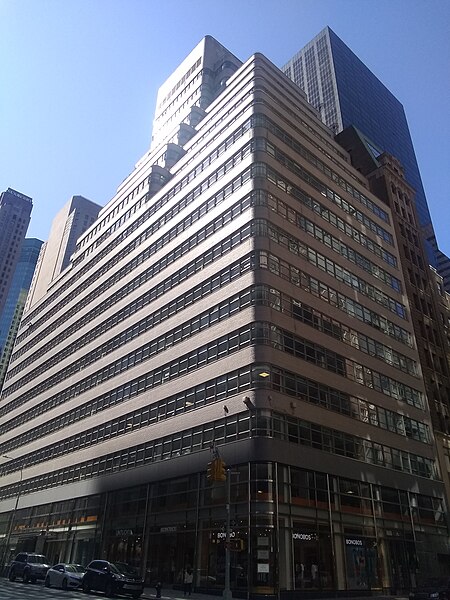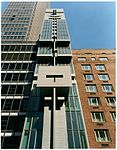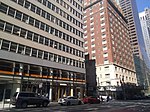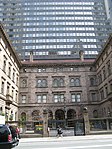488 Madison Avenue

488 Madison Avenue, also known as the Look Building, is a 25-story office building in the Midtown Manhattan neighborhood of New York City. It is along Madison Avenue's western sidewalk between 51st and 52nd Streets, near St. Patrick's Cathedral. 488 Madison Avenue was designed by Emery Roth & Sons in the International Style, and it was constructed and developed by Uris Brothers. The building was originally named for its primary tenant, the American magazine Look. The building largely contains a facade of white brick, interspersed with horizontal strips of aluminum windows. The lowest two stories contain a main entrance on Madison Avenue as well as several glass-and-metal storefronts. The three sides are connected by curved walls. The exterior includes several setbacks to comply with the 1916 Zoning Resolution. Each of the building's stories contain an average floor area of 19,500 square feet (1,810 m2), a feature intended to maximize usable office space. 488 Madison Avenue was constructed from 1948 to 1950 as a speculative real estate development, without a main tenant. By late 1949, the building was completely leased, and it was named after Look magazine, which had signed a lease for several floors. 488 Madison Avenue remained the headquarters of Look until the magazine stopped publishing in 1971, although it continued to be known as the Look Building for several years. The building has been owned by John D. and Catherine T. MacArthur Foundation and The Feil Organization since the 1970s. The Look Building was added to the National Register of Historic Places in 2005, and the New York City Landmarks Preservation Commission designated it as an official landmark in 2010.
Excerpt from the Wikipedia article 488 Madison Avenue (License: CC BY-SA 3.0, Authors, Images).488 Madison Avenue
Madison Avenue, New York Manhattan
Geographical coordinates (GPS) Address External links Nearby Places Show on map
Geographical coordinates (GPS)
| Latitude | Longitude |
|---|---|
| N 40.758888888889 ° | E -73.975277777778 ° |
Address
Look Building
Madison Avenue 488
10022 New York, Manhattan
New York, United States
Open on Google Maps








